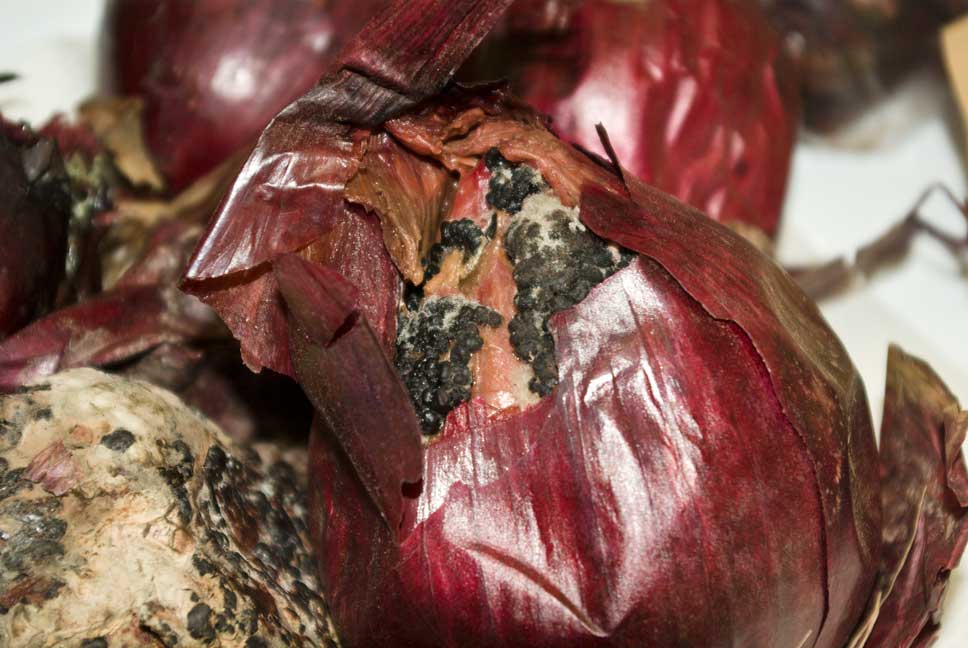Onion neck rot: seed infection, pathogens and treatments
By Steve Roberts, 01 Feb 2015
HDC is funding Plant Health Solutions to investigate seed-borne neck rot in onions. Neck rot can cause significant losses in stored onions. It is caused by three species of Botrytis: B. aclada, B. allii, B. bysoidea. B. bysoidea is thought to be less important; B. allii and aclada were previously lumped together as one species (B. allii). The disease is seed-borne but symptoms are not apparent in the field and only develop in store. It is likely that most seed is tested by seed companies, and is treated with fungicides. Nevertheless major losses still occur in some years. The absence of field symptoms means the link between seed-borne infection and storage losses is obscure; it is further affected by weather conditions and inoculum load, therefore there remains some controversy about the importance of seed infection. This HDC-funded project will provide an independent assessment of the prevalence and incidence of the disease in commercially available onion seed in the UK. We will also provide some insight into the relative importance of the two main species that cause it, both in seed in store, and examine the ability of seed treatment fungicides to control the disease. Finally we will also begin studies to determine if it matters which pathogen(s) is/are present on seed.
Tags: plants; diseases; onions; neck rot; Botrytis; allii; aclada
